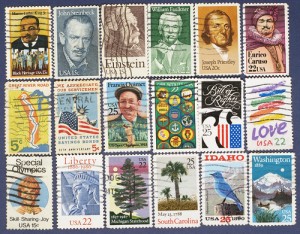Brands
Navigating the Culture of Curation in a Content World
Mark Armstrong is the creator of Longreads, a website that curates longform journalism from around the web. He’s also a journalist. In the past, he’s done work for brands and publications alike.
 He’s the perfect archetype of a 21st century content creator: He uses multiple media and platforms, he builds the ideas of others but also generates his own, and he finds inspiration in both the purely editorial and the commercial.
He’s the perfect archetype of a 21st century content creator: He uses multiple media and platforms, he builds the ideas of others but also generates his own, and he finds inspiration in both the purely editorial and the commercial.
Given his position squarely at the nexus of a host of trends in the current world of content, it was interesting to read a recent blog post of his in which he dissects what he sees as a frequently arising debate: content creation vs. content curation.
Three questions no one is asking
He asks three question that he says no one is really asking in this heavily curated age:
- Is curation actually valuable, and do we have proof that it is, or is not?
- Does curation actually have a viable business model? And should it?
- Who is a curator?
In the last paragraph of the post, Armstrong writes that “the people I know who ‘curate’ are also writers, editors, bloggers and publishers.” That is to say the line between creator and curator is becoming increasingly blurred. So, too, is the line between brand and publisher: simply turn to Visual.ly or Pinterest for examples of the former acting as the latter.
What is it that caused these lines to become so fuzzy? It comes down to a question of platform. Before mass adoption of social platforms, a blogger’s main task was to populate his own site and wait for, as Armstrong mentions, the “aggregator” sites to compile everything. Brands were a step removed on the content food chain: they had to take actions that would lead to the bloggers writing about them (hopefully in a positive way), and then wait for the aggregators to pick up those blog posts.
Today, the distinction between brand and publication is, in many forums, all but gone. It is up to brands to decide how editorial they are willing to become, and, conversely, up to editorial outlets how commercial they are willing to become. The platform is democratic—it’s how you use it that becomes interesting.
Does curation build trust?
Still, one might argue that there are limitations to what a brand can achieve through curation, rather than creating content. Can brands build trust as curators, and, if so, is it even valuable for them to do so?
 With great power of distribution comes greater responsibility, or, at least, greater potential risk and reward.
With great power of distribution comes greater responsibility, or, at least, greater potential risk and reward.
As Libby Brittain, director of editorial development at fast-growing startup Branch, put it: “It’s one thing to use the social web superficially as a marketing channel, which often goes hand in hand with giving employees overly strict usage guidelines and lots of canned marketing copy. It’s quite another to embrace social in a meaningful way and to realize that the individual online presence of your employees — especially senior management — will say more about your company than marketing copy ever would or could.”
The art of catching and not letting go
Brittain’s point is well taken. It’s not just the brand itself that has a voice, it’s also the people who speak, directly or indirectly, on the brand’s behalf. In that sense, Armstrong’s point holds just as true to brands as it does to bloggers. They’re all just people, trying to catch and hold the attention of other people. Whether that’s through developing and sharing one’s one content, or artfully repackaging and commentating on that of another, individuality and perspective are what matter.
And brands that get this right, or allow their employees to get this right, are often the ones that gain the most devoted followings—look no further than Tony Hsieh and Zappos, for whom the distinction between spokesperson and brand is nearly nonexistent.
The opportunity to create and to curate is available to all, brands and publishers alike. And in the interest of building an engaged audience, perhaps the best approach is to shift focus away from classifying what one it is that one does, and to turn it towards doing it better.
Image courtesy of Zurbagan/shutterstock, qvist/shutterstock
Get better at your job right now.
Read our monthly newsletter to master content marketing. It’s made for marketers, creators, and everyone in between.




